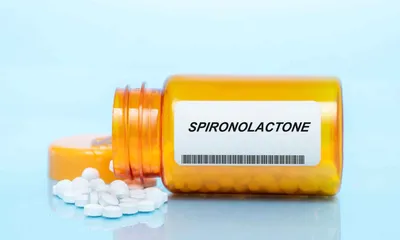How Do Steroids Cause Blood Clots

Ever wonder if steroids do more than just build muscle or fight inflammation? Most people know them for their benefits of stronger bodies, reduced swelling and faster recovery. But the hidden risks are often overlooked. One of the most serious side effects are blood clots. Whether prescribed by a doctor or taken for performance reasons, steroids can quietly change how your blood flows, and not always in a good way.
How Do Steroids Cause Blood Clots?
Depending on whether you're dealing with corticosteroids or anabolic steroids, steroids in general can cause blood clots in a few different ways. While they work differently in the body, both types can impact circulation, inflammation, and blood composition in ways that increase the risk of clotting.
Corticosteroids are often prescribed to manage inflammation, asthma, arthritis, and autoimmune conditions, but the risk comes from how they affect the blood vessels and immune system. These medications can make blood platelets stickier and more likely to clump together. They can also interfere with how your blood vessels function, possibly slowing circulation and increasing clotting risk. Long-term or high-dose use seems to raise that risk even more.
Anabolic steroids can be even more risky, as they are often misused to build muscle or improve athletic performance. These substances can thicken the blood by increasing red blood cell count and altering cholesterol levels. More red blood cells can mean thicker blood, which flows more slowly and then can easily form clots. Anabolic steroids can also lower good cholesterol (HDL) while raising bad cholesterol (LDL), further damaging blood vessels and making clots more likely to develop.
Why Are Blood Clots Dangerous?
Blood clots aren’t always obvious, and that’s part of the problem. They can form silently in the legs or arms and then suddenly break loose and travel to the lungs. This can be a life-threatening condition known as a pulmonary embolism.
Symptoms manifest differently in various parts of the body. Common signs include swelling, pain, redness, and warmth in the affected area. Other more dangerous ones can be shortness of breath, chest pain, coughing up blood, and sudden, severe headaches. That’s why it’s important to take any sign seriously, especially if you're using or have recently used steroids.
How to Lower the Risk?
If you're prescribed steroids, always take them exactly as directed and check in with your doctor about any side effects or unusual symptoms. Don’t stop the medication suddenly, but don’t ignore concerns either. Staying active, hydrated, and avoiding long periods of sitting can help keep your blood moving. If you’re using anabolic steroids without medical supervision, it’s worth knowing that the risk isn’t just about hormones as your circulation and cardiovascular health could be on the line too.
Final thoughts
Steroids can do a lot, both good and bad. When used properly under medical guidance, they can serve a real purpose. But whether you’re dealing with prescriptions or considering muscle enhancers, asking important questions like how do anabolic steroids cause blood clots is worth understanding. Knowing what’s happening inside your body is key to protecting it in the long run.


